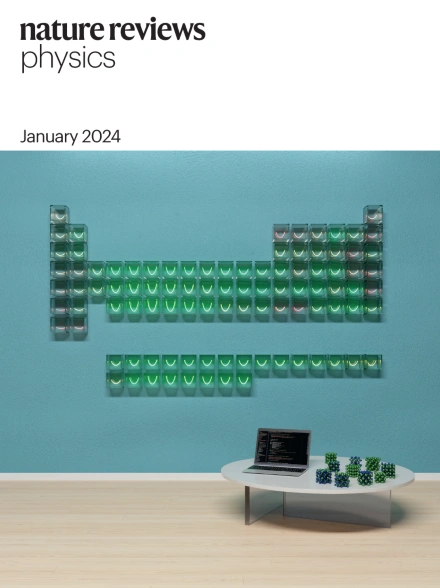Nonlocal metamaterials and metasurfaces
IF 39.5
1区 物理与天体物理
Q1 PHYSICS, APPLIED
引用次数: 0
Abstract
The aim of rationally designed composites called metamaterials or metasurfaces is to achieve effective properties that go beyond those of their constituent parts. For periodic architectures, the design can draw on concepts from solid-state physics, such as crystal symmetries, reciprocal space, band structures and Floquet–Bloch eigenfunctions. Recently, nonlocality has emerged as a design paradigm, enabling both static and dynamic properties that are unattainable with a local design. In principle, all material properties described by linear response functions can be nonlocal, but for ordinary solids, local descriptions are mostly good approximations, leaving nonlocal effects as corrections. However, metamaterials and metasurfaces can be designed to go far beyond local behaviour. This Review covers these anomalous behaviours in elasticity, acoustics, electromagnetism, optics and diffusion. In the dynamic regime, nonlocal interactions enable versatile band structure and refraction engineering. In the static regime, they result in large decay lengths of ‘frozen’ evanescent Bloch modes, leading to strong size effects. For zero modes, the decay length diverges. Nonlocality has gained increasing attention in metamaterial and metasurface design. This Review discusses recent advances, focusing on the physical mechanisms of nonlocality that lead to intriguing properties and functions.

非局部超材料和超表面
合理设计被称为超材料或超表面的复合材料的目的是获得超越其组成部分的有效性能。对于周期结构,设计可以借鉴固态物理的概念,如晶体对称性、互反空间、能带结构和Floquet-Bloch本征函数。最近,非局部性已经成为一种设计范式,它可以实现局部设计无法实现的静态和动态特性。原则上,所有由线性响应函数描述的材料性质都可以是非局部的,但对于普通固体,局部描述大多是很好的近似,留下非局部效应作为修正。然而,超材料和超表面可以被设计得远远超出局部行为。本文综述了弹性、声学、电磁、光学和扩散等方面的异常行为。在动态状态下,非局域相互作用使多用途能带结构和折射工程成为可能。在静态状态下,它们导致“冻结”消失的布洛赫模式的大衰减长度,导致强烈的尺寸效应。对于零模,衰减长度发散。非定域性在超材料和超表面设计中受到越来越多的关注。这篇综述讨论了最近的进展,重点是导致有趣的性质和功能的非定域性的物理机制。
本文章由计算机程序翻译,如有差异,请以英文原文为准。
求助全文
约1分钟内获得全文
求助全文
来源期刊

Nature Reviews Physics
Multiple-
CiteScore
47.80
自引率
0.50%
发文量
122
期刊介绍:
Nature Reviews Physics is an online-only reviews journal, part of the Nature Reviews portfolio of journals. It publishes high-quality technical reference, review, and commentary articles in all areas of fundamental and applied physics. The journal offers a range of content types, including Reviews, Perspectives, Roadmaps, Technical Reviews, Expert Recommendations, Comments, Editorials, Research Highlights, Features, and News & Views, which cover significant advances in the field and topical issues. Nature Reviews Physics is published monthly from January 2019 and does not have external, academic editors. Instead, all editorial decisions are made by a dedicated team of full-time professional editors.
 求助内容:
求助内容: 应助结果提醒方式:
应助结果提醒方式:


